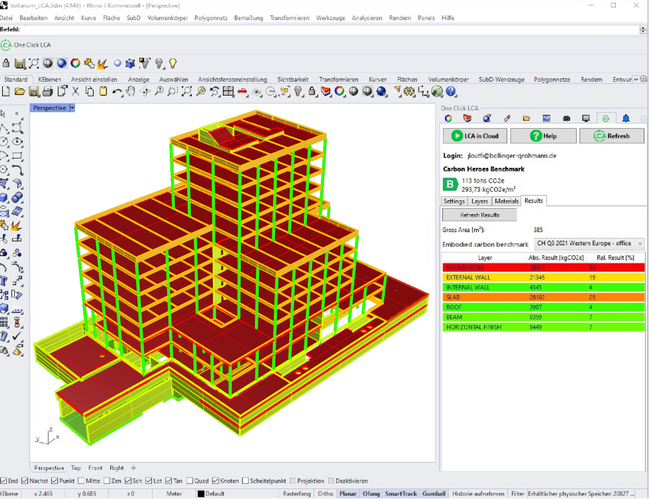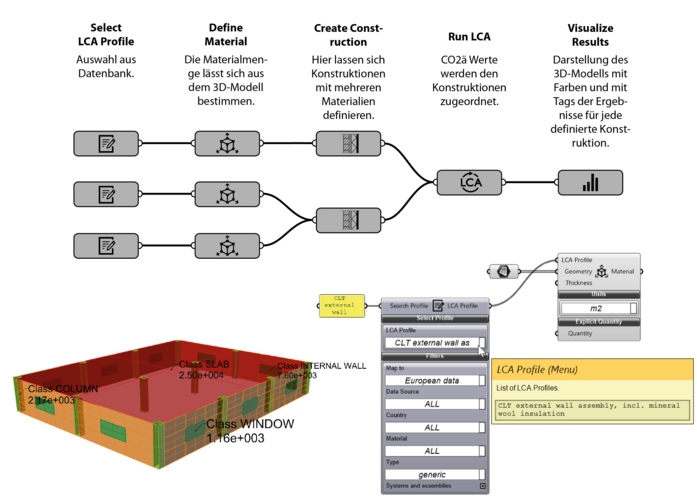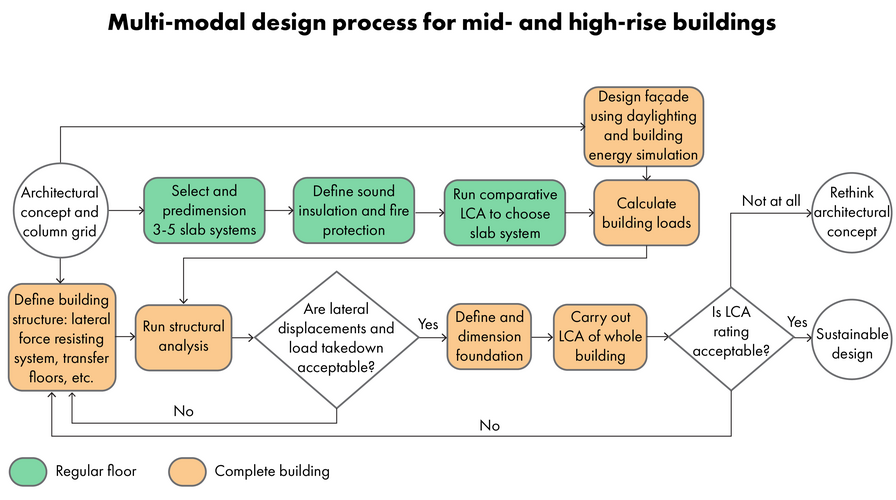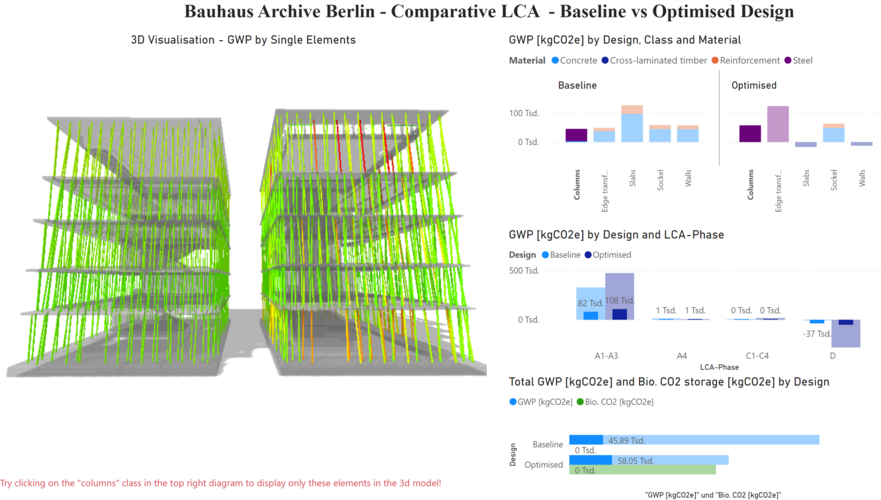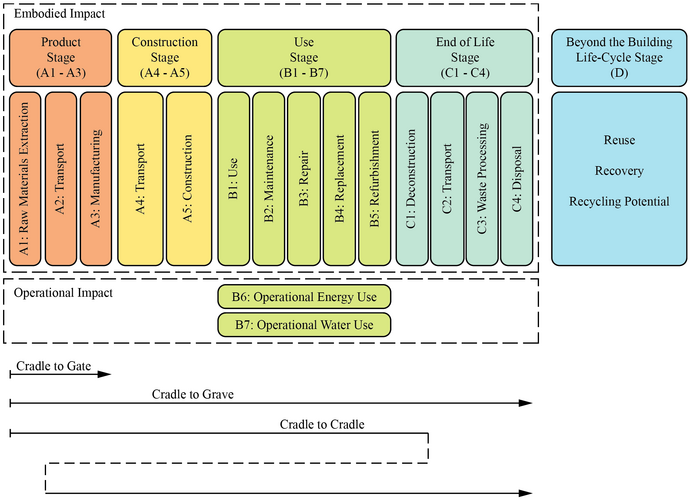Digital tools for life-cycle assessment
With 38% of global carbon dioxide emissions, the construction and building materials sector is the biggest driver of global climate change. In order to fight against climate change from within the construction industry, an adequate metric must be implemented from the very beginning of the design stage to positively affect the environmental outcome of a building project. Life-cycle assessment (LCA) is arguably the most extended objective methodology for evaluating the environmental impact of products, processes and services which can also be applied to evaluate the environmental impact of a certain building. However, the implementation of the LCA of such a complex product as an actual building poses some major challenges because a building is a system that encompasses multiple different products, processes and activities.
The main objective of this thesis is to define an approach to effectively automate the implementation of the building LCA in the early stages of the design process in order to reduce the environmental impacts of a building project. For this purpose, a flexible plug-in for a 3D modelling software is developed to automate the building LCA with an architectural 3D model, which overcomes the lack of reliability and applicability to real-world projects of current LCA plug-ins. The plug-in is evaluated through some case-studies to define a strategy about how to implement its use in the early design phases of a project to reduce its environmental impacts.
Beyond this current necessity to generalise the implementation of cradle-to-grave LCA in architectural projects, the designs of the future must be much more consistently concerned with optimising the multimodal performance of human spaces. For this reason, a methodology to implement the LCA plug-in in combination with other building analysis tools in a multi-modal design context is defined and it is later implemented in an architecture master course to evaluate through the designs of the students its potential to improve the building performance.
At the same time, the enormous resource consumption of current construction, especially in the area of mineral material, requires a rediscovery of material-saving construction that is oriented towards the basic concepts of material effectiveness, robustness, structural diversity and the use of local resources. To tackle this challenge, the functionality of the LCA tool is extended so it can be applied to cradle-to-cradle projects in which the design with a limited stock of materials is a constrain.
Finally, the goals of LCA visualisations and the best format to display the LCA results are defined through a survey based on the previously analysed case-studies, with the aim to improve project communication and improve the efficiency of LCA as a tool to reduce the environmental impacts of a building project.
